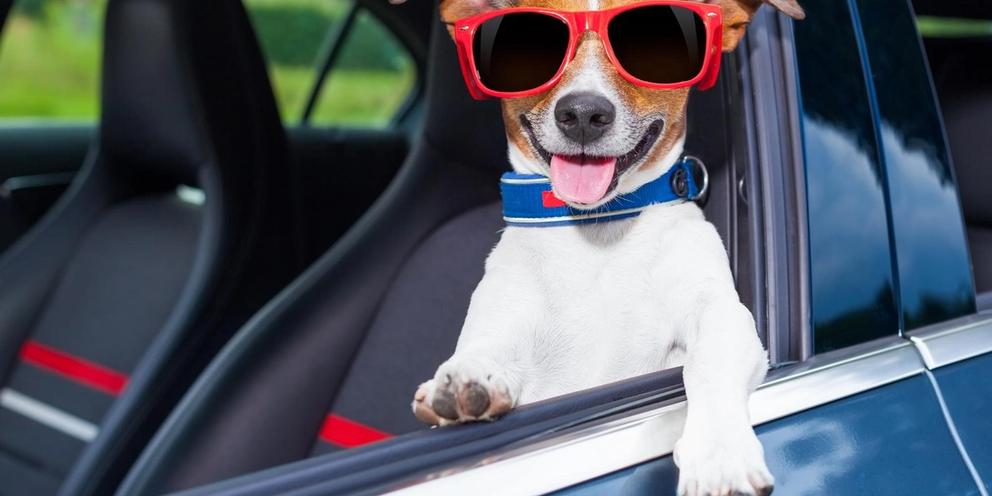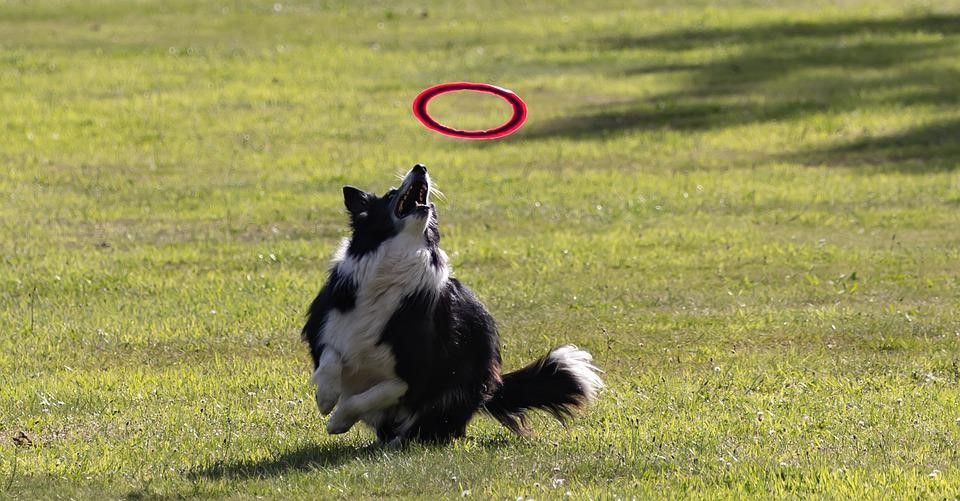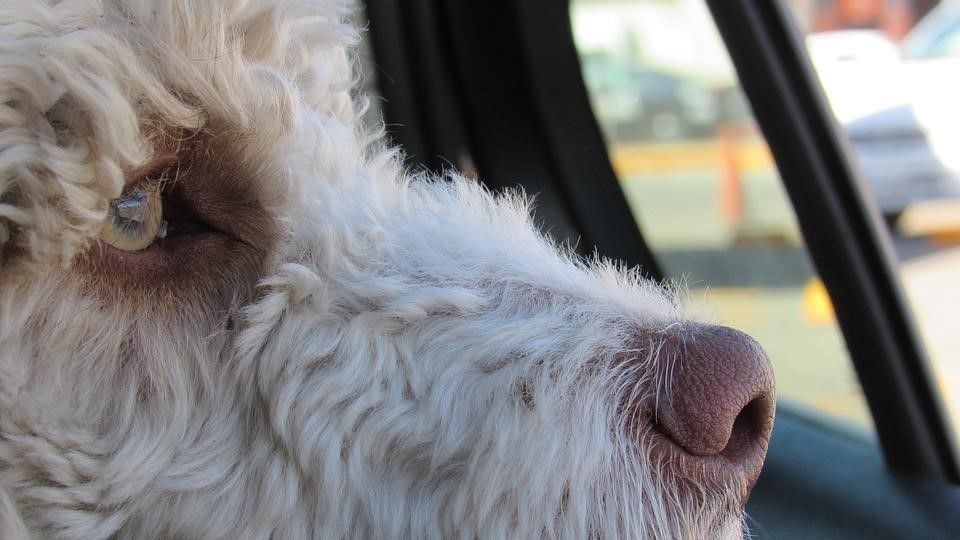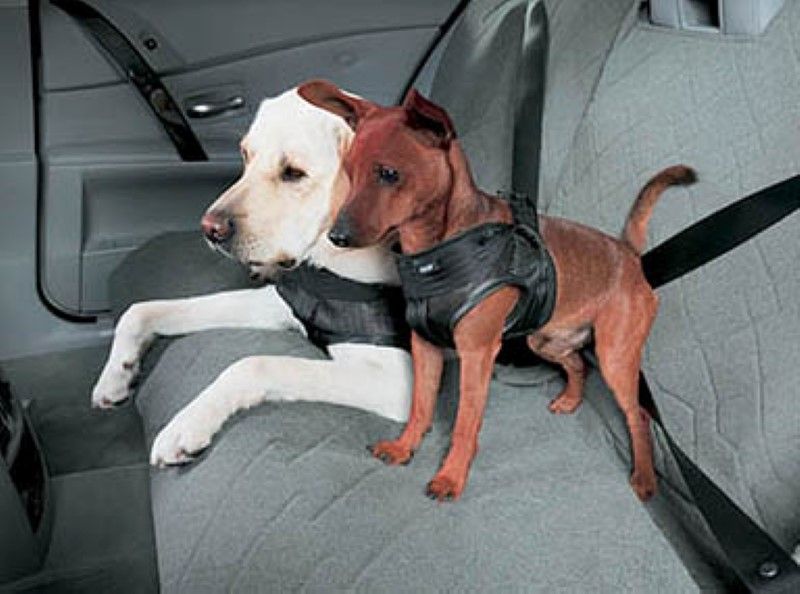
How to Keep Your Pets Safe While Driving
Travel season has arrived, and many pet owners are preparing to take their furry friends on their next vacation. However, traveling with pets requires more than just letting Fido hop into the passenger seat. Keeping your pet safe while driving isn’t difficult; with proper supplies, your pet can stay safe while driving and enjoy the ride. Here’s How to set yourself and your pet up for a successful drive:
Familiarize Your Pets with Riding in the Car
Hopping into a moving vehicle is not second nature to pets. For many animals, the movement of a car is stressful and confusing. It’s critical to familiarize your pet with this new environment before taking a long road trip. Here’s how to introduce your pets to the car:

Image Credit: 9436196 / Pixabay
- Exercise Pets Before Drives A well-exercised pet reduces stress responses and is more likely to stay calm in a new environment. Take your dog for a 15-minute walk around the block before trying a trip in their car. A lengthy play session with their favorite toy can achieve similar results for cats or other animals.
- Bring Familiar Toys or Blankets Bring your pet's favorite toys and blankets for all trips, whether it’s the first or hundredth trip in the car. The familiar scents of home and the comfort of a toy will help keep your furry friend calm during the drive.
- Begin With Short Drives You don’t want to take your pet for a long drive the first time they are ever in the car. Sure, some pets may acclimate right away, but the experience is jarring and stressful for most pets. Start with short drives down the street and back home before building up to a few blocks, then a few miles, then a half-hour, and so on to build up your pet’s comfort with driving.
- Play Light Music Light music and other white noise can help reduce a pet’s anxiety during a drive. Many pet owners use light music during the day to soothe pets while the house is empty, and music can achieve similar results during a car ride. Try to play more calming music at a low-background level that you can easily talk over.
- Praise Your Pet Training your pet to handle car rides requires the same praise as teaching them a new trick or potty training. Give your pets positive feedback and verbal encouragement while driving. If you have a passenger with you, have them give the pet treats or pets while driving. Note that drivers should never give pets or treats while driving, which can create a dangerous distraction.

Image Credit: EnriqueZavaleta / Pixabay
Treat Your Pets Like Passengers
When traveling with pets, owners don’t always view their furry friends through the same lens as a human passenger. However, the AKC and the American Veterinary Medical Association emphasize that all owners should treat their pets like human passengers to ensure driver, passenger, and pet safety while driving.
Treating a pet like a passenger includes taking the following steps:
- Engage Child Locks On Doors and Windows Pets are just as likely to accidentally engage an electric window while traveling as children. And, despite popular belief, a stressed-out pet can accidentally open some car doors. So it’s best to engage child locks on rear doors and windows to prevent such an accident.
- No Sticking Heads Out The Window Though a happy dog sticking its head out the window seems like a quintessential road trip image, allowing your dog or other pets to do this can result in injury. Likewise, you wouldn’t let your child stick their face out the window for fear of debris hitting them; don’t let your pet face that risk.
- Don’t Let Pets Sit In Your Lap Whether in the passenger seat, backseat, or driver’s seat, you should not let your pet sit in your lap. In the case of an animal suddenly reacting aggressively due to stress, it can result in injury to you or the animal. Additionally, you risk an animal having an accident on you versus the seat. Most importantly, it is illegal to have pets in your lap while driving in several states.
- Avoid the Front Seat It’s a good rule of thumb to treat your pet like a child passenger when selecting their seat in the vehicle. Avoid allowing your pet to sit in the front seat whenever possible; pet injuries and fatalities are more common in car accidents when pets ride in the front seat.
- Don’t Keep Pets In Pickup Beds Never let your pets ride in pickup beds - there’s no way to secure them, and the bed can heat up to dangerous levels in warmer temperatures.
- Plan Pit Stops And Breaks Pets require breaks on road trips just like humans do. They need a pit stop every hour or two to walk, use the bathroom, and eat.
- Don’t Feed Them While The Car Is Moving Don’t let your pet chow down on a bowl of food or water when driving. If a pet chokes, you may not notice it. Additionally, stressed animals may try to eat to soothe themselves and may end up with stomach aches.
- Don’t Leave Pets In An Unattended Vehicle Leaving pets in an unattended vehicle is just as dangerous as leaving a child in a similar state. You should never leave a pet unattended, even if the A/C is on. Also, it is illegal to leave pets in a car unattended in some states.

Image Credit: David Poe / flickr
Select Safe Pet Restraints
When driving with your pet, it’s essential that you keep them restrained while driving. An unrestrained animal can cause distractions, get in the way of you and the wheel, or injure themselves. Additionally, unrestrained animals are more likely to experience life-threatening injuries in a car accident.
Using a pet restraint or harness can ensure a safe ride for your pet. However, not all restraints are crash-safe. Look for restraints with a high rating by the Center for Pet Safety (CPS) for quality pet safety products.
- Harnesses and Restraints Harnesses typically wrap around a pet’s midsection and connect to a car’s seatbelt. CPS-approved harnesses evenly distribute force in the case of an accident. Most harnesses have handles that allow you to get the pet out of the vehicle more easily.
- Car-Specific Pet Beds For smaller breeds of dogs, cats, or similarly sized pets, a car-specific pet bed can provide a safe driving experience. Pet beds specifically designed for the car usually have a zip-up pod for the animal to rest in, which connects to a seatbelt for safety. Look for CPS-approved beds when selecting a product.
- Barriers In addition to restraints or car beds, pet owners can consider installing a pet barrier in their car. Barriers create a screen between the front seat and the back, reducing distractions for the driver and preventing unrestrained pets from climbing into the front seat.

Image Credit: StockSnap / Pixabay
What To Bring
When driving with your pet, you should pack a kit of important information, first aid, and other supplies to ensure a safe and fun experience for yourself and your pet. Include the following in your travel kit:
- Microchip information.
- Vaccination records.
- Health certificate (some states, airlines, and hotels require these.)
- A crate for overnight stays.
- List of veterinarians along your route.
- Pet first aid kit.
- Temporary information tags.
- Pack water and snacks.
- Pack mats, liners, or potty pads.
- Set up a litter box for cats.
- Bring potty bags for walks.
FAQs
Why Can’t I Leave My Pet In The Car?
Leaving your pet in a vehicle unattended is dangerous, even with the A/C on. It’s not uncommon for pets to experience panic at being left in the car. Additionally, if A/C shuts off or you forget to leave it on, you may unintentionally expose your pet to extreme temperatures that can cause illness or death. Finally, several states have made this illegal; doing so can result in legal repercussions.
Is It Illegal To Have Pets In The Front Seat?
In many states, it is illegal to keep pets in the front seat. You can find out if doing so in your home state or any travel destinations by calling the local Department of Transportation.
Do Hotels Have Special Pet Requirements?
Yes, most hotels have special pet requirements, and not all hotels allow pets. If you require overnight stays during your road trip, check with the hotel(s) to verify any fees, rules, or information you need to stay there with your pet.
Do Pets Get Motion Sickness?
Yes, pets can experience motion sickness in a moving vehicle. Here are steps you can take to reduce motion sickness on long drives:
- Limit food and water before trips.
- Ask your veterinarian about anxiety and nausea medication.
- Lower windows slightly for fresh air.
- Keep the car cabin cool via cracked windows or A/C.
- Use pet-specific pheromones while traveling to reduce stress.
By preparing yourself, your pet, and your vehicle for trips, you can ensure an enjoyable and safe experience for everyone.
Featured Image Credit: @ damedeeso / depositphotos lic # 247820446
Updated